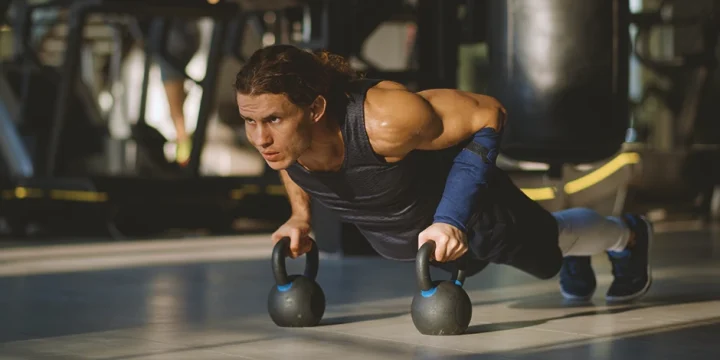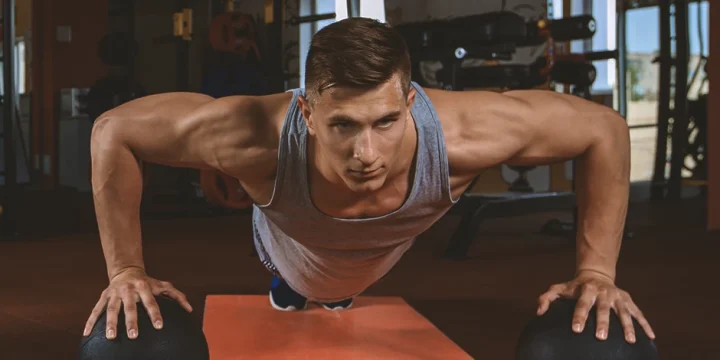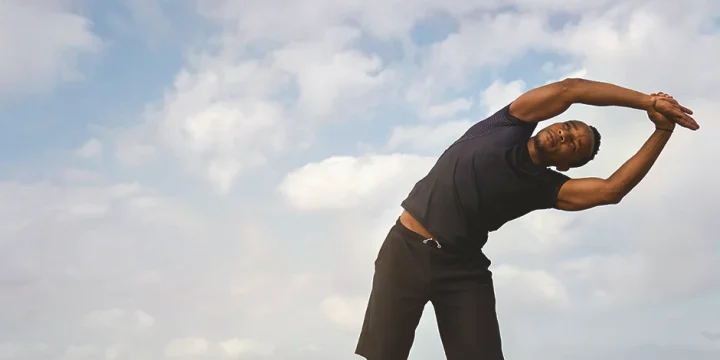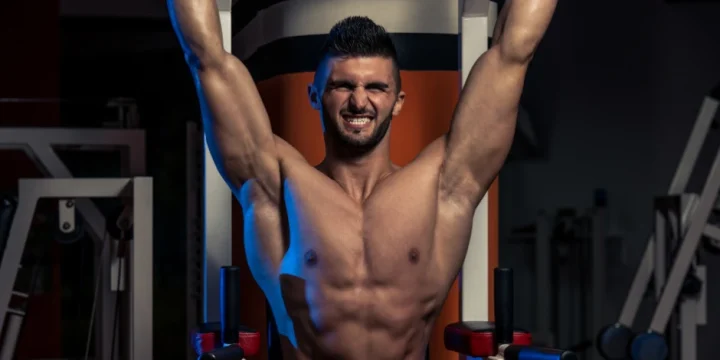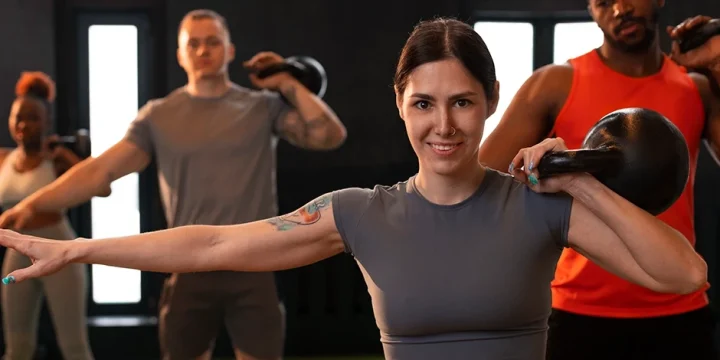Good mornings are a functional movement pattern that builds and strengthens the glutes, hamstrings and lower back.
They are essential for having a smaller risk of injury and developing lower back strength required to perform other efficient exercises, such as deadlifts.
Based on my observations as a personal trainer, here are the five best good morning exercises you should incorporate into your workout routine.
Quick Summary
- Variations such as barbells, resistance bands, or front-loaded good mornings offer diverse ways to strengthen your glutes, hamstrings, and lower back.
- Good morning exercises are key for a strong start to the day, focusing on building and fortifying the glutes, hamstrings, and lower back muscles.
- Peer Journal research highlights that good mornings can significantly enhance posterior chain muscle strength, aiding in heavier lifting and improved physical performance.
- From my coaching experience, regularly practicing good morning exercises, combined with reliable protein powders, leads to noticeable improvements in both strength and flexibility, particularly in the lower back and hamstrings.
Top Good Morning Exercise Variations

1. Barbell Good Morning
From my experience, mastering the form and staying consistent with this hip hinge exercise has remarkably bolstered the hamstrings, glutes, abs, and back of many I've coached.
To perform the good morning exercise using a barbell, you must:
- Stand with your feet shoulder-width apart.
- Rest a barbell on your upper back, and place your hands just outside your shoulders.
- Soften your knees up about 15 degrees to get into the starting position.
- Drive your rear end back as you hinge forward until your chest is parallel with the floor.
- Return to the standing position and repeat until you reach the desired number of sets.
2. Resistance Band Good Mornings
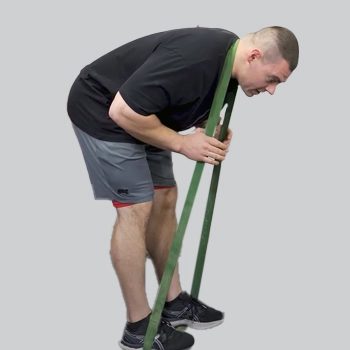
Banded good mornings are a great exercise with all the benefits of the traditional good morning but without the barbell on your upper back.
It allows you to improve your posture while activating your abs, glutes, hamstrings, and upper back muscles while reducing your risk of injury.
To perform this exercise:
- Stand with your feet shoulder-width apart.
- Take a resistance band and step on it firmly with both feet, then squat down to place the other side of the band around your neck so it’s on your traps.
- Stand straight up while keeping the core tight and the shoulders back.
- Hinge at the hips as deep as you can until you feel a hamstring stretch while keeping your back straight.
- Come back up and repeat.
3. Front-loaded Good Morning Exercise
This variation can allow you to improve your hinge pattern, an important movement required in essential exercises like deadlifts and kettlebell swings.
To perform this exercise:
- Hold a kettlebell in front of your chest.
- Place your feet hip-width apart with a slight bend in your knees.
- Propel your hips forward as you squeeze your glutes.
- Stand back up to go back to the standing position.
- Repeat until you reach the desired number of sets.
4. Seated Good Morning Exercise
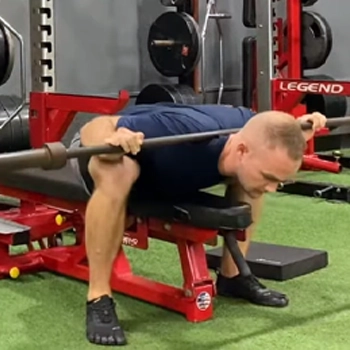
Though it doesn't engage the hamstrings as fully as the traditional barbell version, I've observed that this variation uniquely challenges and improves flexibility and strength in the posterior chain and lower back in those I train.
To do this exercise:
- Straddle a flat bench and place a barbell behind your back.
- Keep your knees bent and your feet flat on the ground in front of your knees.
- Hinge down to forward as far as possible.
- Reverse the motion while trying to keep your back extremely flat to return to the starting position.
- Return to the upright position and repeat until you reach the desired number of sets.
Pro Tip:
From my coaching playbook, I suggest kicking off with 'pancake good mornings.' It's a weight-free variation that's a hit among my clients for its incredible effectiveness in firing up the hamstrings and adductors.
- Stand with feet wider than shoulder-width.
- Bend forward at the hips, keeping your back straight.
- Aim to lower your torso towards the ground, legs straight but not locked.
- You should feel a stretch in your hamstrings and inner thighs.
- Use your core and hamstrings to return to the start.
5. Single-Leg Good Mornings
The single-leg good morning is a unilateral exercise that allows you to target each side of the glutes and hamstrings at a time to create a more aesthetic look. It is a good exercise for improving your hip mobility.
To perform this exercise:
- Rest the bar on your lower traps as you would for a barbell back squat.
- Lift one leg and hinge at the hip until your chest is parallel to the ground while maintaining a neutral spine.
- Reverse the motion to return to the standing position.
- Repeat until you reach the desired amount of reps on both sides.
Related Articles:
What Are the Key Benefits of Good Mornings?

The key benefits of good mornings are improved strength, physical performance, posture, and injury prevention.
- Promotes strength - Good mornings can strengthen all the posterior chain muscles, allowing you to lift heavier, according to Peer Journal research [1].
- Improves physical performance - Strengthening your lower back by performing good morning exercises allows you to perform exercises like deadlifts and squats better.
- Prevents injury - Good mornings will strengthen the spinal erectors, reducing the risk of lower back injury and helping you maintain spinal stability [2].
- Improves posture - Strengthening the spinal erectors will help you maintain good posture.
“Your hamstrings (back of the thigh) are the primary target with this move, but other muscle groups get a good workout, too. Your gluteus maximus (buttocks) and adductor magnus (inside thigh) work as synergists while the erector spinae (runs down the length of the spine) is the stabilizer.”
- Paul Rogers, Editor at Verywellfit
What Are the Common Good Morning Exercise Mistakes?
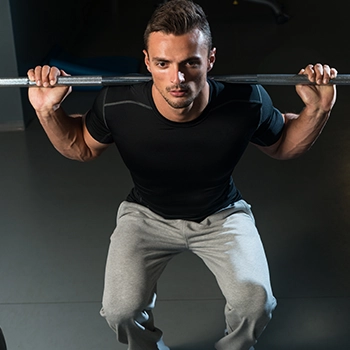
From my coaching experience, I've noticed that messing up good morning exercises is typically due to poor form.
Main slip-ups:
- Not leading with your hips and over-bending your torso
- Bending your knees too much shifts the focus to your quads, not your back muscles
- Rounding your back (start with lighter weights or bodyweights to master the form before leveling up)
- Ditching a warm-up
Without warming up, your muscles won't be prepared for the action, which can increase your chances of pulling or straining something.
Your spinal alignment should never change throughout the movement for two reasons:
- Having poor form increases your risk of injury by increasing stress on your lower back.
- Not engaging the correct muscles.
FAQs
Is Standing or Seated Good Morning Better?
Standing good morning is better than the seated good morning as it allows you to target more muscles. It will primarily activate your glutes, hamstrings, and the posterior chain to a lesser extent, whereas the seated version emphasizes your lower back.
What Muscles Does the Good Morning Exercise Work?
Muscles that the good morning exercise work are the hamstrings, glutes, posterior chain muscles, and abs.
References:
- https://peerj.com/articles/708/
- https://pubmed.ncbi.nlm.nih.gov/23417108/
About The Author
You May Also Like
